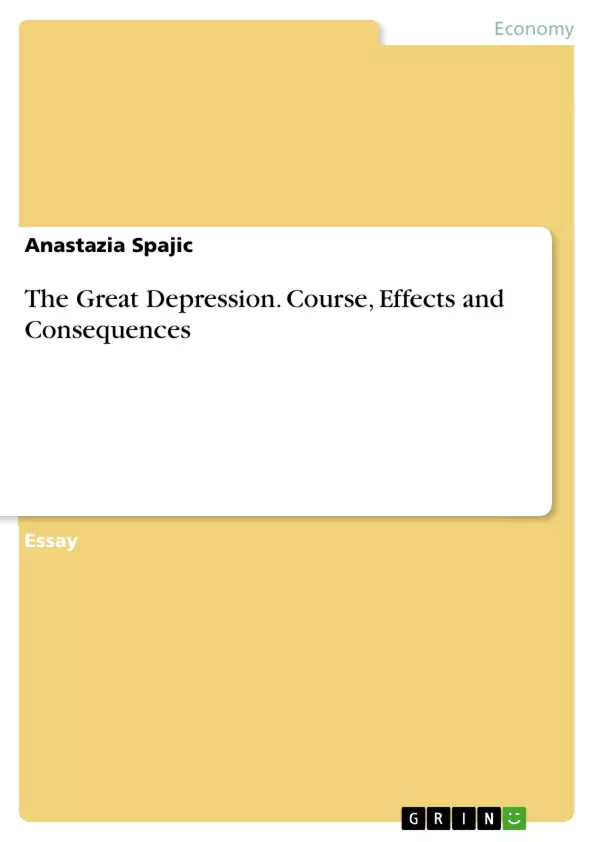This scientific essay deals with the topic of the Great Depression. The Great Depression represents the economic crisis that began on October 24, 1929 and dominated the 1930s. There is no doubt that the interwar economic crisis was the most serious event in the recent economic crisis. The reason for this is its size and the associated consequences. Both historians and economics have worked intensively on the issues surrounding the Great Depression. This is because the Great Depression was a global phenomenon. This globality has determined our thinking since then and justifies its impact. But all the facts just mentioned will be shown and explained in more detail in the course of this scientific essay. Furthermore, the current corona crisis, which is also having a very large impact on the global economy, shows why an occupation with this topic is justified right now.
At the beginning of the scientific essay, the term economic crisis and how an economic crisis arises are to be explained. This is to serve that the further content of this work can be better understood and transferred to the Great Depression. Thereupon it will give you some general information about the Great Depression, which should introduce the whole topic. Afterwards, a brief insight into the economic situation in Europe and America after the First World War and in the 1920s is given. This insight is intended to help you understand the causes and triggers for the Great Depression. These two topics are also dealt with in this essay. To round off the entire topic, the countermeasures that were used to overcome the crisis are listed at the end. Ultimately, there is also a conclusion on the entire topic.
Table of Contents
- Introduction
- Meaning and emergence of an economic crisis
- General information about the Great Depression
- The period after the First World War and the golden twenties
- The beginning and course of the Great Depression
- Effects and consequences of the Great Depression
- Countermeasures
- Conclusion: Effects of the Great Depression on Today's Society
Objectives and Key Themes
This essay aims to provide a comprehensive understanding of the Great Depression, examining its origins, course, consequences, and enduring impact. The essay focuses on the economic crisis that began in 1929 and dominated the 1930s, highlighting its global nature and lasting implications for today's society.
- The definition and emergence of an economic crisis
- The causes and triggers of the Great Depression
- The effects and consequences of the Great Depression on the global economy and society
- The countermeasures implemented to overcome the crisis
- The lasting impact of the Great Depression on contemporary society
Chapter Summaries
The essay begins by defining the term "economic crisis" and explaining how it arises, using the Great Depression as a case study. It then provides general information about the Great Depression, including its key dates and historical context. The essay explores the economic situation in Europe and America after World War I and throughout the 1920s, identifying factors that contributed to the onset of the crisis. Subsequent sections will delve into the beginning and course of the Great Depression, analyzing its effects and consequences on the global economy and society. The final sections will focus on the countermeasures implemented to overcome the crisis and its lasting impact on today's world.
Keywords
This essay explores the key themes of economic crisis, global recession, the Great Depression, stock market crash, unemployment, and societal impact. It examines the historical context of the period following World War I, focusing on the golden twenties and their subsequent downfall. The essay will analyze the causes and consequences of the Great Depression, including its impact on the global economy and its lasting legacy on contemporary economic and social structures.
- Quote paper
- Anastazia Spajic (Author), 2020, The Great Depression. Course, Effects and Consequences, Munich, GRIN Verlag, https://www.grin.com/document/1119062



